Mahatma Gandhi Handwriting Analysis
Mohan Das Karamchand Gandhi (2nd October 1869 – 30th January 1948) popularly known as Mahatma Gandhi was an Indian revolutionary as well as an anti-colonial nationalist political ethicist who used non-violent protest to lead the campaign to free India from British rule and then to influence the movement for freedom and civil rights all over the world.
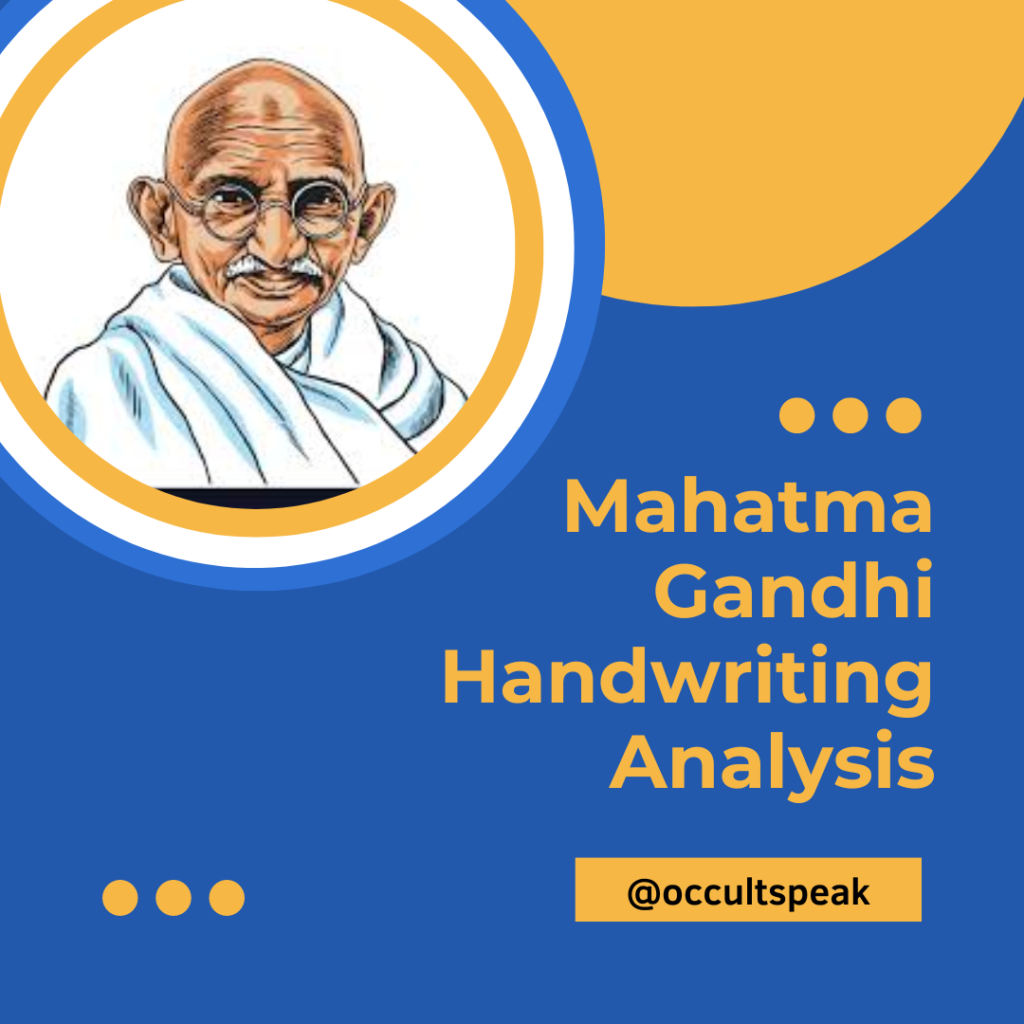
Raised and educated in a Hindu family living in the coastal Gujarat, Gandhi trained in the career of law, “at the Time of Inner Temple” , London, and was summoned to the bar at the age of 22, in June 1891. After two turbulent years in India and a time when a lawyer was not able to begin an effective law practice, he relocated to South Africa in 1893 to represent an Indian merchant in a legal case.
He then stayed within South Africa for 21 years. In South Africa, Gandhi established a family and was the first to defend civil rights and employed nonviolent resistance in a struggle.
In 1915, at the age of 45 Gandhi came back to India and quickly began connecting with farmers, peasants, and urban workers to demonstrate against the excessive tax on land and discrimination.
Let’s analyze Mahatma Gandhi’s HW (handwriting sample) to understand his thought process and his vision-mission through his handwriting patterns.
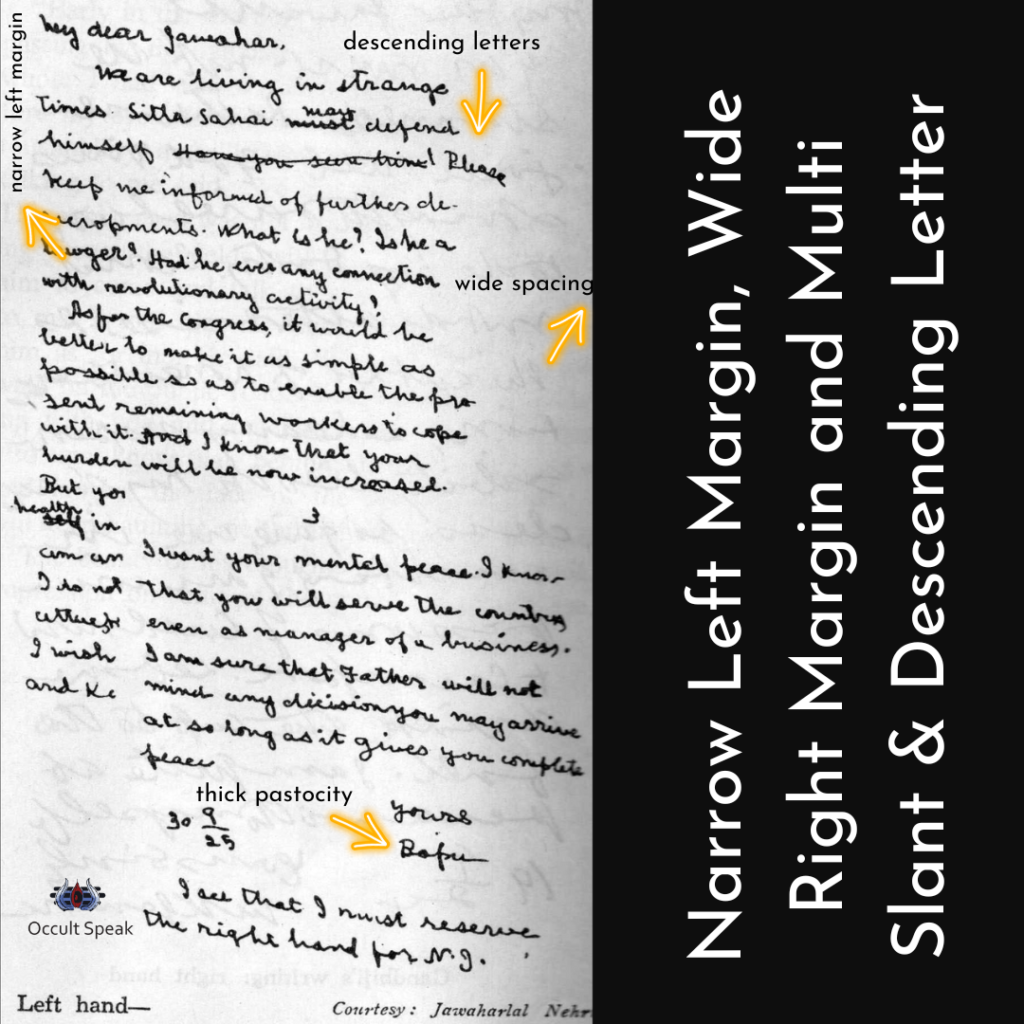
This Image is taken from wikipedia for reference for the authentication of the sample.
The sample above shows a strong will power, stubborn and eager to achieve its goal by hook and crook.
Looking into the Dark Shady pastocity (the ink-flow throughout the handwriting) shows a deep urge in the lower zones also.
The margin on the left side shows, attachment for the soil and family hence can’t leave behind his legacy and customs of the family.
However, when we look at the right margin ( I don’t know which year, this sample was written) it depicts that the person lacks the clarity in the goal, Hence the right margin which is seen for goal, future and planning part seems to be incomplete. Mahatma Gandhi’s Handwriting here shows that he was unable to grasp the opportunities in those times.
The last 6 -7 descending lines depict his mind in different moods meaning, he was unable to focus on work and was also suffering from slight depression.
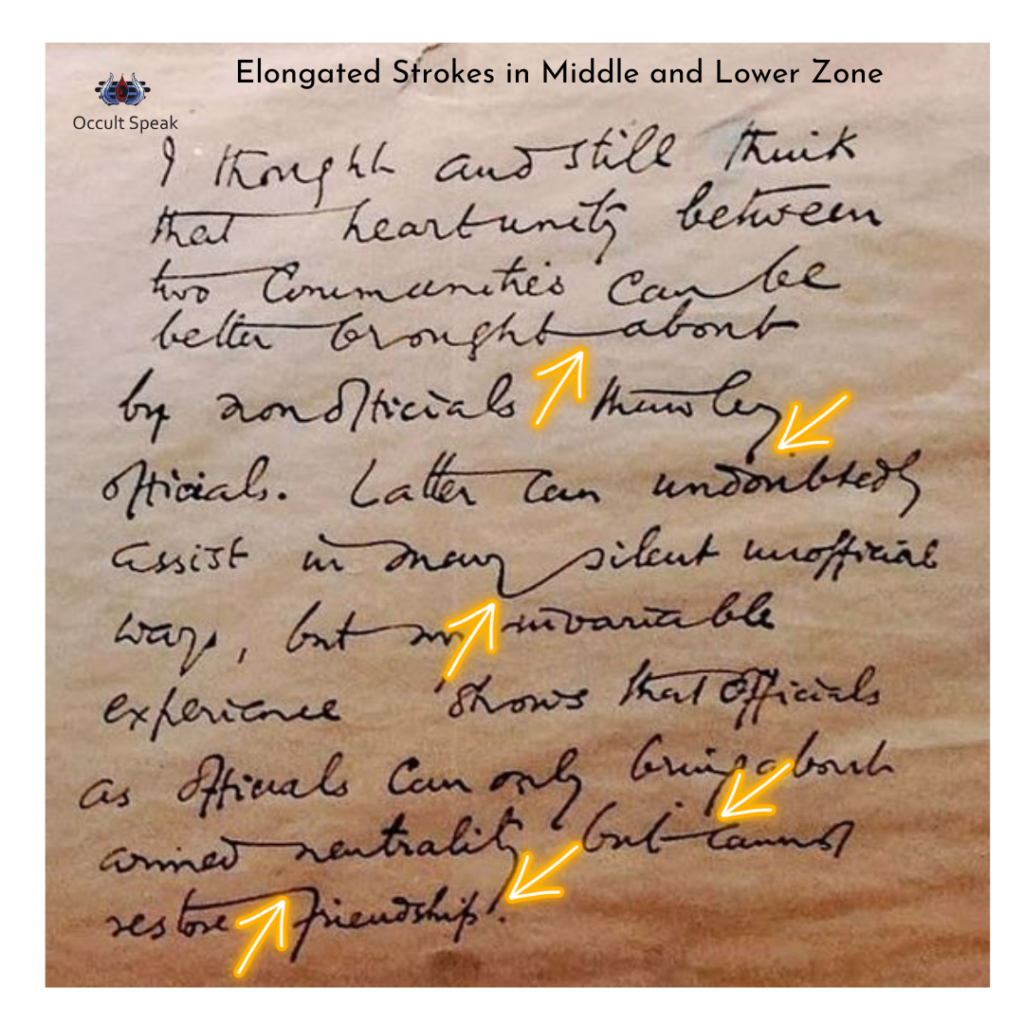
Mood Swings in Mahatma Gandhi Handwriting
The words are moving in multi-directions pointing towards his fluctuating behaviour.
That means, Mahatma Gandhi Handwriting Clearly show that sometimes behaved extremely nice and sometimes very weird.
There have been many controversies as many times Gandhiji took drastic steps for the nation.
Mahatma Gandhi Handwriting clearly shows he was trying to handle his mood that may be due to multiple reasons owing to the different environment in those times.
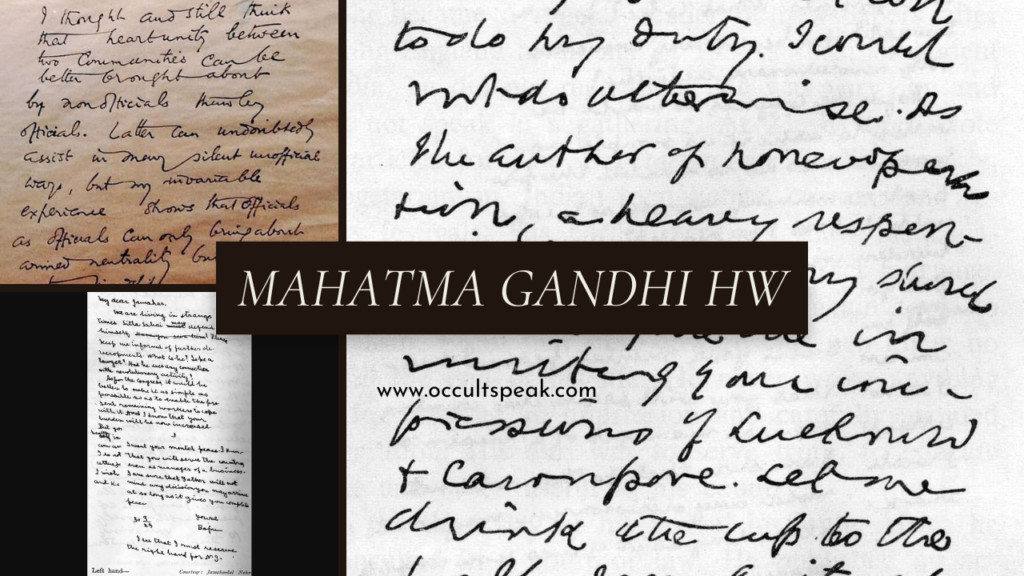
Thick Pastocity and Mahatma Gandhi Handwriting
Extremely thick pastocity across the sample shows his deep urge for accumulation of wealth, name and fame. Hence being a national figure and having a slogan – ‘saada jeevan uccha vichaar’, he did have a materialistic mindset in those times.
The Complete and Incomplete Loop in Mahatma Gandhi Handwriting
The loop in mahatma gandhi handwriting is seen both complete and few incomplete but being squeezed loop shows that such personality had immense frustration regarding lower zone activities.
We all have read about the controversies of his experiments on sexual desire and people / congress leaders have also trolled him for his experiments on celibacy.
Now, let’s look for another sample of Mahatma Gandhi Handwriting.
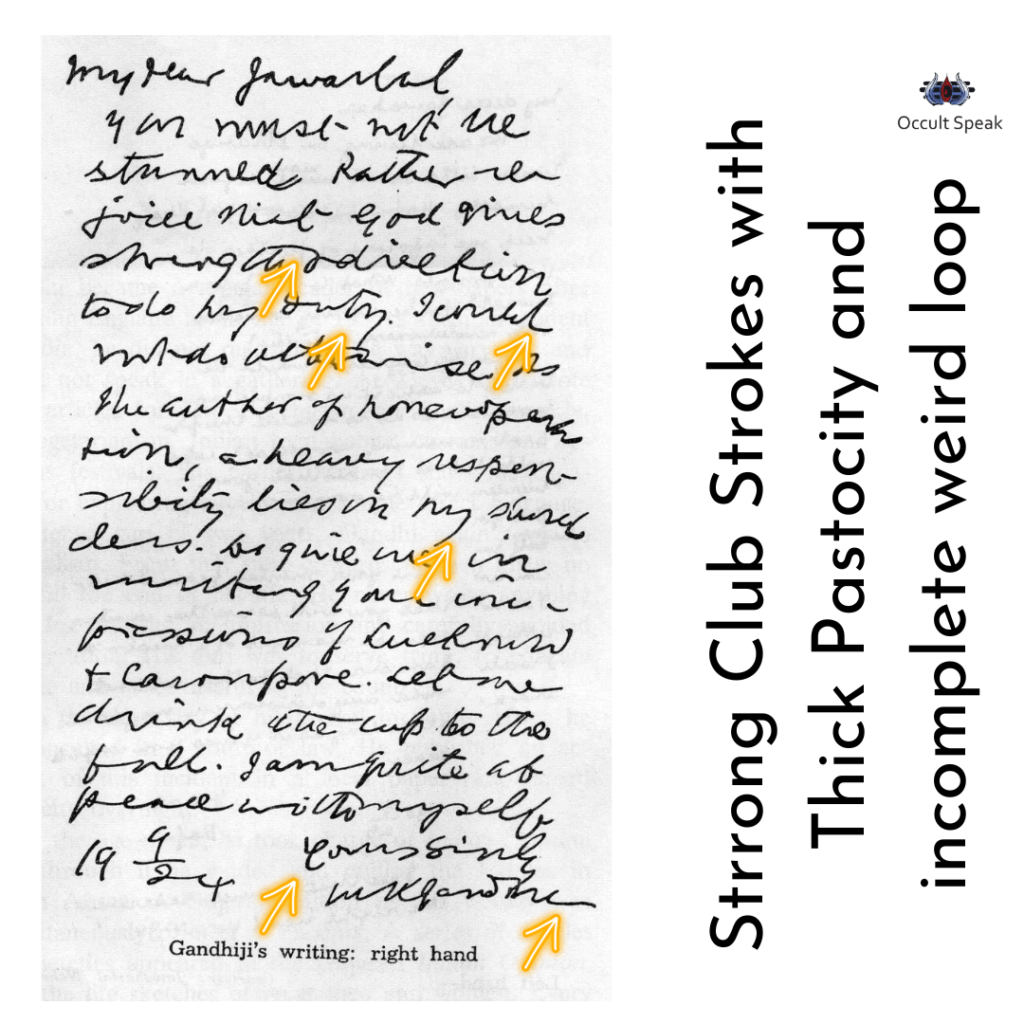
Starting and Ending Strokes in Mahatma Gandhi Handwriting
We can see from the assigned mahatma gandhi handwriting sample that lots of elongated strokes show unnecessary arguments which later lead to stress and anxiety.
Look at the all g and y letters are incomplete thick pasty strokes plus interference with next line paragraph. This makes Gandhi ji restless and he kept working to achieve his goal.
The Knotting in the d , b shows confusion, irritation with self and others.
This incomplete loop also show inability in walking and pain in the lower zone. The shooting pain is seen in the g and y letter, few experts also say that incomplete loop leads to sexual frustration as we know, after a few years of marriage (after having children) Gandhi ji took vow of celibacy (after taking permission from his wife Kasturba) .
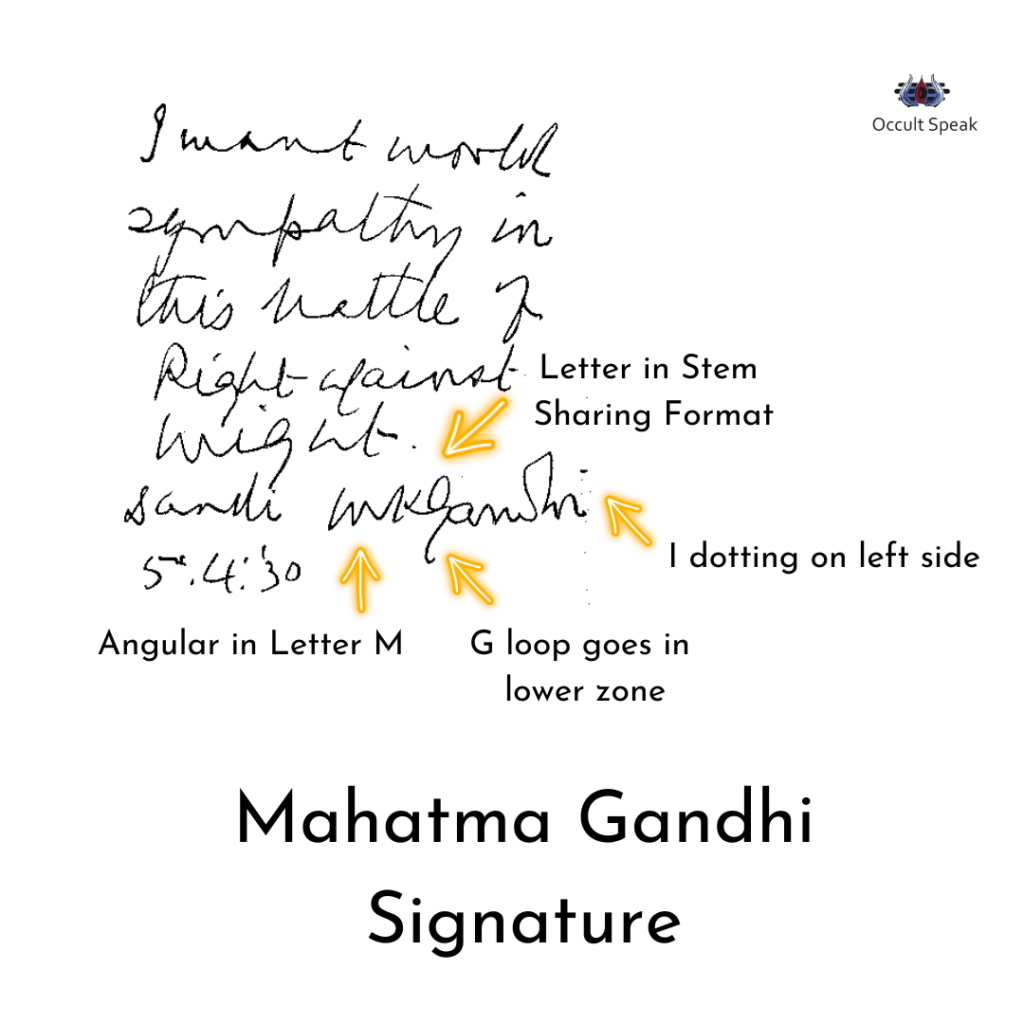
Look at the Signature, Mahatma Gandhi cursive structure shows logical and practicality in his life. The Angularity in the Letter M which is his own initials (Mohan Karamchand) show a very sharp mind and good level of intelligence.
The connective letter K sharing with M and G of Gandhi ji shows family bonding and sharing all the data and information with his father.
This shows a healthy relationship with father but when we look at the letter G in Gandhi , I am surprised, the letter G is squeezed and the letter loop is going down, depicting he doesn’t have that respect for the mother/mother figure.
Again, have a look at the D and H letters. They are connected just like Cadbury’s d and b letter show insecurity and hidden agenda in the occupational zone. uch people want to hide the reality and a few dark secrets (although Mahatma ji has shared many of this life experience in his Autobiography – My Experiment with the Truth).
The Ending Stroke in the word Gandhi
The Ending stroke shows high ambition and speed which again depicts strong desire to grow in the occupation and the stroke going down in the lower zone says he needs strong validation for his action and there is high expectation from self and others. The ending stroke also shows taking faster decisions and lots of worry.
Now, did you notice the missing i dotting?
This indicates that he used to miss out on many informations while taking any logical decision or he used to go into an over thinking process.
Overall, the sample shows huge pastocity which is quite negative with lower zone loop giving rise to stubbornness and rigidity, high sexual urges and extreme slant in C-D show high expression of feelings toward others.
Regards,
Nirav Hiingu
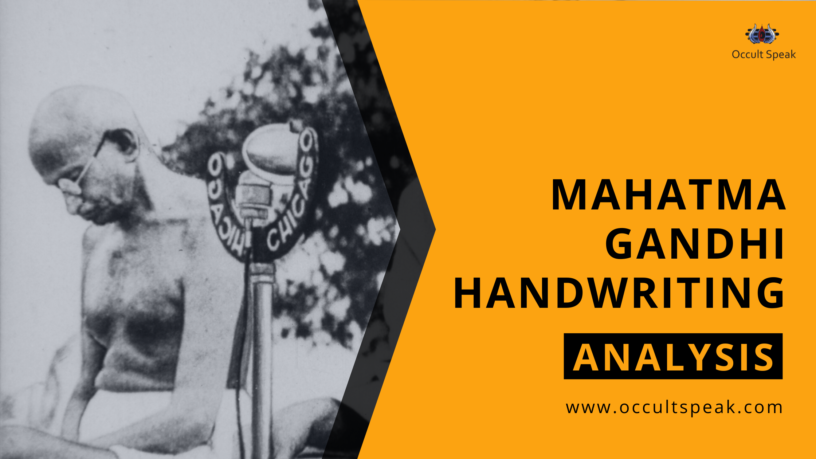



Leave a Reply